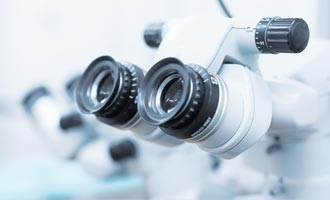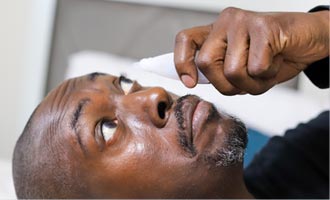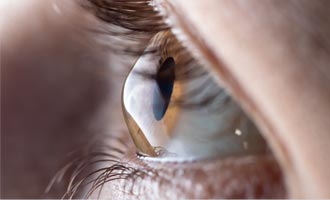What is Glaucoma?
Glaucoma is a group of diseases that can damage the eye's optic nerve. It is a leading cause of blindness in the United States. It usually happens when the fluid pressure inside the eyes slowly rises, damaging the optic nerve. Often there are no symptoms at first. Without treatment, people with glaucoma will slowly lose their peripheral, or side vision. They seem to be looking through a tunnel. Over time, straight-ahead vision may decrease until no vision remains.
Who is At Risk for Glaucoma?
A comprehensive eye exam can tell if you have glaucoma. People at risk should get eye exams at least every two years. They include
- African Americans over age 40
- People over age 60, especially Mexican Americans
- People with a family history of glaucoma
Types of Glaucoma
Open-angle Glaucoma
Open-angle glaucoma, also called primary open-angle glaucoma. This is the most common type of glaucoma. It happens when the fluid in the eye doesn't drain properly from the eye's drainage canals. The fluid gets backed up in the canals like a clogged sink drain that gets backed up with water. This causes an increase in eye pressure. Open-angle glaucoma develops slowly, over a period of months or years. Most people don't have any symptoms or vision changes at first. Open-angle glaucoma usually affects both eyes at the same time.
Closed-angle Glaucoma
Closed-angle glaucoma, also called angle-closure or narrow-angle glaucoma. This type of glaucoma isn't common in the United States. It usually affects one eye at a time. In this type of glaucoma, drainage canals in the eyes get covered up, as if a stopper was put over a drain. Closed-angle glaucoma can be either acute or chronic.
Symptoms of Glaucoma
Closed-angle glaucoma can cause sudden and severe symptoms. If not treated promptly, it can cause blindness. Symptoms include:
- Sudden blurring of vision
- Severe eye pain
- Red eyes
- Colored halos around lights
- Nausea and vomiting
If you have any of these symptoms, seek medical help right away.
Tests for Glaucoma
Glaucoma is usually diagnosed with a group of tests, commonly known as a comprehensive eye exam. A comprehensive eye exam includes:
Tonometry
In a tonometry test, you will sit in an exam chair next to a special microscope called a slit lamp. Your ophthalmologist or other health care provider will put drops in your eyes to numb them. Then you'll rest your chin and forehead onto the slit lamp. While you are leaning into the slit lamp, your provider will use a device on your eye called a tonometer. The device measures eye pressure. You will feel a small puff of air, but it won't hurt.
Pachymetry
As in a tonometry test, you'll first get drops to numb your eye. Your provider will then use a small device on your eye called a pachymeter. This device measures the thickness of your cornea. The cornea is the eye's outer layer that covers the iris (colored part of the eye) and the pupil. A thin cornea may put you at higher risk for getting glaucoma.
Perimetry
Perimetry, also known as a visual field test, measures your peripheral (side) vision. During perimetry, you'll be asked to look straight ahead at a screen. A light or image will move in from one side of the screen. You'll let the provider know when you see this light or image while still looking straight ahead.
Dilated eye test
In this test, your provider will put drops in your eyes that widen (dilate) your pupils. Your provider will use a device with a light and magnifying lens to look at your optic nerve and check for damage.
Gonioscopy
In this test, your provider will put drops in your eyes to both numb and dilate them. Then your provider will put a special hand-held contact lens on the eye. The lens has a mirror on it to let the doctor view the inside of the eye from different directions. It can show if the angle between the iris and cornea is too wide (a possible sign of open-angle glaucoma) or too narrow (a possible sign of closed-angle glaucoma).
Treatment for Glaucoma
There is no cure, but glaucoma can usually be controlled. Early treatment can help protect your eyes against vision loss. Treatments usually include prescription eyedrops and/or surgery.



